
In the intricate dance of modern living, few aspects command as much critical attention as personal safety, particularly when navigating the sprawling networks of our roads. The evolution of the automobile has been inextricably linked with the relentless pursuit of enhanced security, transforming vehicles from mere conveyances into sophisticated cocoons of protection. This journey, from basic mechanical safeguards to advanced computational guardians, represents a profound shift in engineering philosophy. It compels us to move beyond a superficial understanding of safety features and embark on a deep analytical exploration of the innovations that define our driving experience. We are witnessing a technological renaissance in vehicle safety, a craft worth studying.
At the heart of this revolution lies a comprehensive ecosystem of vehicle safety features, meticulously designed to protect occupants during collisions and, increasingly, to prevent accidents from occurring altogether. These features, ranging from time-tested passive components to cutting-edge active driver assistance systems, collectively represent humanity’s ingenuity in mitigating risk. Understanding these diverse technologies is not merely an academic exercise; it empowers individuals to make informed decisions for their well-being and that of their loved ones. Our commitment is to provide valuable insights into these critical systems, showcasing the continuous advancements that redefine road safety.
This in-depth article will dissect the landmark features that have become cornerstones of modern automotive engineering. We will explore how these systems, through their innovative craft and design, synergistically work to enhance overall vehicle safety. From the fundamental principles that underpin collision protection to the advanced algorithms orchestrating accident prevention, each feature offers a unique narrative of technological prowess. Join us as we unravel the complexities and appreciate the thoughtful engineering behind 14 essential vehicle safety features, securing a safer future on our roads.

1. **Airbags**Among the most universally recognized components of a vehicle’s passive safety architecture are airbags, unassuming marvels of rapid deployment engineered to cushion occupants during severe impacts. Their introduction marked a significant paradigm shift, moving beyond mere structural integrity to actively mitigate the forces exerted on the human body. These sophisticated systems have been instrumental in a dramatic reduction of the risk of injuries and fatalities in accidents, serving as a critical secondary restraint. The foresight in integrating such a dynamic protective element fundamentally altered the course of automotive safety design.
When sensors detect a collision of sufficient force, the airbag system is triggered, inflating almost instantaneously with inert gas. This rapid deployment creates a protective barrier between the occupant and the vehicle’s hard interior surfaces, distributing impact forces over a wider area. Crucially, airbags are designed to deflate equally quickly, allowing the occupant to move freely after the initial impact, preventing further injury from the bag itself. This precise, instantaneous action underscores the complex engineering dedicated to split-second occupant protection.
The continuous evolution of airbag technology, evidenced by the presence of “advanced airbag systems” in contemporary vehicles, highlights an ongoing commitment to refining occupant protection. These systems now often include multiple airbags strategically placed throughout the cabin, offering comprehensive coverage from various angles of impact. Their synergy with seat belts forms a formidable duo, exponentially increasing the chances of survival and minimizing severe injuries. Airbags stand as a testament to the ceaseless innovation driving safer vehicle design.
Read more about: Buyer’s Remorse Hits Hard: 15 Cars Drivers Regretted Purchasing According to Latest Survey Findings

2. **Seat Belts**Predating many of today’s advanced electronic systems, seat belts remain the quintessential safety feature, serving as the foundational element of occupant restraint. Their simplicity belies their profound effectiveness, firmly securing individuals within the vehicle’s protective shell during sudden decelerations or impacts. Along with airbags, these essential devices have been instrumental in reducing the risk of injuries and fatalities in countless accidents. The humble seat belt, therefore, stands as an unyielding sentinel against the kinetic forces unleashed during a collision.
The primary function of a seat belt is to distribute the force of an impact across the strongest parts of the body, such as the pelvis and shoulders, preventing violent forward motion. By keeping occupants securely in their seats, seat belts prevent ejection from the vehicle, a scenario associated with a significantly higher risk of severe injury or death. They also ensure that occupants remain correctly positioned for other safety systems, such as airbags, to deploy effectively. This coordinated restraint is vital for optimizing protection in a crash scenario.
The enduring importance of seat belts is universally acknowledged, ingrained in driving regulations and safety campaigns worldwide. Their effectiveness is amplified when used in conjunction with other modern safety features, forming an integrated safety framework. Despite technological advancements, the fundamental principle of physical restraint provided by a seat belt remains irreplaceable. It underscores that sometimes, the most effective innovations are those that are both straightforward and consistently applied.
Read more about: Seriously Where Did They Go? A Deep Dive into 14 Iconic Car Gadgets That Vanished From Our Toolboxes

3. **Anti-lock Braking System (ABS)**Shifting from passive restraint to active control, the Anti-lock Braking System (ABS) represents a monumental leap in dynamic vehicle safety, fundamentally altering how drivers interact with emergency stopping scenarios. Before ABS, hard braking often led to wheel lock-up, causing uncontrolled skidding and a complete loss of steering capability. This ingenious system was engineered to counteract that inherent instability, affording drivers a crucial measure of control when it matters most. It marked the dawn of intelligent braking, prioritizing both stopping power and directional stability.
At its core, ABS operates by preventing the wheels from locking up during aggressive or emergency braking maneuvers. It achieves this through a rapid, pulsating application of brake pressure to each wheel, far faster than a human driver could manage. This intricate modulation ensures that each wheel maintains a degree of rotation, thereby preserving the tire’s grip on the road. The result is the ability to maintain steering control and prevent skidding, even under intense braking forces.
The practical implications of ABS are most evident in emergency situations where a driver needs to stop quickly without losing control. Whether encountering an unexpected obstacle or navigating slippery surfaces, the system empowers the driver to steer around hazards while simultaneously slowing down. This capability transforms a potentially chaotic and dangerous situation into a manageable one, significantly enhancing accident avoidance. It offers a layer of tactical flexibility that was previously unavailable.
Today, ABS is a standard feature across virtually all new vehicles, forming a cornerstone of modern active safety systems. Its foundational technology laid the groundwork for subsequent stability and traction control systems, demonstrating its pervasive influence. Vehicle manufacturers, including those like Landmark, prioritize equipping their inventory with ABS, recognizing its indispensable role. It underscores an industry-wide commitment to equipping drivers with superior control capabilities.
Read more about: General Motors: Deciphering a Century of Automotive Milestones, Innovations, and Challenges for the Informed Consumer

4. **Electronic Stability Control (ESC)**Building upon the principles introduced by ABS, Electronic Stability Control (ESC) elevates vehicle dynamics management to an unprecedented level of sophistication, actively intervening to prevent loss of vehicular control. This advanced system acts as an unseen co-pilot, constantly monitoring the vehicle’s trajectory and comparing it to the driver’s steering input. Its development addressed the complex challenge of maintaining stability when a vehicle begins to veer off course, particularly in critical moments. ESC is a testament to the power of computational control in enhancing physical safety.
The operational intelligence of ESC relies on a network of sensors that continuously detect discrepancies between the driver’s intended path and the vehicle’s actual movement. If these sensors register a loss of traction or an impending skid, ESC rapidly calculates the necessary corrective actions. It then precisely applies individual brakes to specific wheels and subtly adjusts engine power output. This swift, targeted intervention works to help the driver regain control before a dangerous situation fully escalates.
The benefits of stability control systems are especially pronounced in challenging driving conditions, such as slippery roads, uneven surfaces, or during abrupt evasive maneuvers. In these scenarios, where a vehicle might otherwise spin out or roll over, ESC’s ability to selectively brake wheels can literally pull the vehicle back onto its intended path. This proactive stabilization greatly reduces the likelihood of single-vehicle accidents and helps maintain composure in critical situations. It provides a vital safety net for drivers facing unforeseen road challenges.
Given its proven efficacy in preventing accidents, ESC has become an indispensable safety feature, mandated in many regions globally and widely adopted by manufacturers. Its inclusion in vehicles, alongside ABS and TCS, forms a robust trinity of electronic aids that fundamentally transform vehicle handling and safety. Landmark, in its commitment to customer well-being, ensures a wide range of its vehicles are equipped with this crucial technology. The pervasive integration of ESC underscores its status as a critical component in the modern safety paradigm.
Read more about: The 9 Smart Car Upgrades That Can Actually Lower Your Insurance Premium

5. **Traction Control System (TCS)**Complementing both ABS and ESC, the Traction Control System (TCS) focuses specifically on optimizing a vehicle’s ability to maintain grip during acceleration, preventing the potentially hazardous phenomenon of wheel spin. While ESC manages overall vehicle stability, TCS ensures that engine power is effectively translated into forward motion without compromising control. Its role is particularly vital when starting from a standstill or accelerating on surfaces with reduced friction. This system intelligently manages power delivery to enhance stability from the very first moment of movement.
The mechanics of TCS involve continuously monitoring the rotational speed of each wheel. When the system detects that one or more wheels are spinning faster than the others, indicating a loss of traction, it takes immediate corrective action. This action typically involves automatically applying brake pressure to the offending wheel or, in some cases, reducing engine power temporarily. The aim is to restore grip and distribute power more effectively to the wheels that still have traction.
By preventing excessive wheel spin, TCS significantly enhances your vehicle’s stability and control, particularly in challenging situations. Imagine accelerating on a wet, icy, or gravel-strewn road; without TCS, the driving wheels might spin freely, leading to a loss of directional control. This system intervenes seamlessly, allowing for smoother and safer acceleration, reducing the risk of fishtailing or veering off course. It grants drivers greater confidence and command in adverse conditions.
As a critical component of the integrated safety suite, TCS works in harmony with ABS and ESC to create a comprehensive layer of dynamic control. Its presence in modern vehicles underscores the industry’s dedication to optimizing every aspect of vehicle performance for safety. Landmark’s inventory, for example, is equipped with TCS, ensuring that drivers can experience enhanced stability regardless of the road conditions. This feature exemplifies the continuous technological advancement aimed at proactive accident prevention.
Read more about: Old vs. New Cars: A Definitive MotorTrend Head-to-Head on Performance, Value, and the True Meaning of Automotive Happiness
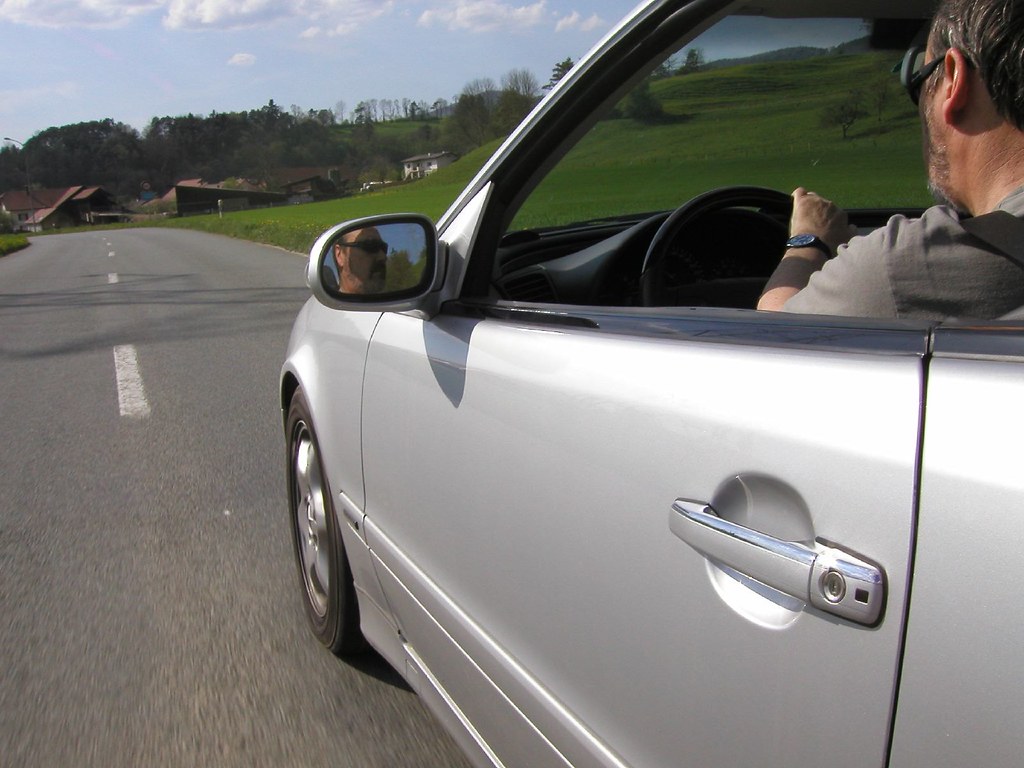
6. **Adaptive Cruise Control (ACC)**Venturing further into the realm of Advanced Driver Assistance Systems (ADAS), Adaptive Cruise Control (ACC) represents a significant leap forward in reducing driver fatigue and enhancing highway safety. Unlike traditional cruise control, which simply maintains a set speed, ACC intelligently adapts to real-world traffic conditions. This innovation merges convenience with a crucial layer of preventative safety, redefining the experience of long-distance travel. It embodies a proactive approach to maintaining safe driving dynamics.
The sophistication of ACC lies in its utilization of cutting-edge sensors and radar technology to monitor the road ahead. This allows the system to detect the presence of vehicles in front and accurately measure their speed and distance. Based on this real-time data, ACC automatically adjusts the vehicle’s speed, either slowing down to maintain a safe following distance or accelerating back to the preset speed when the path clears. This continuous, dynamic adjustment mirrors the adaptive nature of an alert human driver.
The immediate benefits of ACC are manifold. Primarily, it significantly reduces the driver’s workload, particularly in varying traffic flows, by eliminating the constant need to manually adjust speed. More importantly, by automatically maintaining a safe distance from the vehicle ahead, ACC plays a critical role in minimizing the risk of rear-end collisions. This proactive collision prevention mechanism helps drivers maintain focus and react more effectively to other unforeseen events. It transforms passive cruising into an active safety engagement.
As a key feature within the ADAS suite, ACC is not only a convenience but a cornerstone of future vehicle automation and connected car safety features. Its ability to intelligently manage vehicle speed and spacing makes it an essential building block for increasingly autonomous driving capabilities. Landmark, committed to safety, offers a range of vehicles equipped with these popular ADAS features, reflecting their profound impact. ACC exemplifies how technology can seamlessly integrate into daily driving to create a safer, less strenuous journey.
Read more about: Beyond Instinct: 15 Cutting-Edge Vehicles for 2025 Designed to Shield You from Common Driving Pitfalls and Enhance Your Safety

7. **Lane Departure Warning (LDW)**Addressing one of the most common causes of highway accidents – unintentional lane deviation – Lane Departure Warning (LDW) stands as a vigilant guardian, enhancing driver awareness and preventing critical errors. This Advanced Driver Assistance System provides a crucial safety net for moments of driver distraction, fatigue, or momentary inattention. LDW represents a proactive technological intervention designed to keep vehicles precisely within their intended corridors. It fundamentally shifts the paradigm from reacting to accidents to actively preventing them.
The operational ingenuity of LDW hinges on its sophisticated use of cameras or sensors, typically mounted to provide a forward-facing view of the road. These components continuously scan lane markings, meticulously tracking the vehicle’s position relative to them. The system is programmed to recognize when the vehicle begins to drift out of its designated lane without the driver activating a turn signal, signaling an unintentional deviation. This constant, high-precision monitoring is the bedrock of its effectiveness.
Upon detecting an unauthorized lane departure, LDW promptly alerts the driver through a variety of sensory cues. These warnings can be visual, appearing as an icon on the dashboard or heads-up display, or audible, emitting a distinct chime or buzzer. Some advanced systems also incorporate haptic feedback, such as vibrations in the steering wheel or seat, to provide a physical cue. This multi-modal approach ensures that the warning is effectively communicated, prompting an immediate corrective response from the driver.
The primary objective of LDW is unequivocal: to help prevent accidents caused by unintentional lane changes. Such incidents often stem from driver fatigue, distraction, or even micro-sleeps, leading to vehicles veering into oncoming traffic or off the road. By providing timely alerts, LDW grants the driver precious seconds to react and guide the vehicle back into its lane safely. This preventative capability underscores its profound contribution to overall road safety and accident reduction.
As a component of advanced driver assistance, LDW is intrinsically linked to the broader vision of connected car safety features. Its capability to monitor and alert drivers about their lane positioning is a foundational element for more automated driving functions like lane-keeping assist. Vehicle providers, including Landmark, recognize the immense value of equipping vehicles with LDW to ensure peace of mind. This feature exemplifies the continuous march towards intelligent vehicle systems that actively protect and assist.
The initial pillars of vehicle safety, from foundational restraints to early active control systems, laid the groundwork for a new era of automotive intelligence. As vehicles become more connected and computationally adept, the focus shifts towards increasingly sophisticated systems that not only assist the driver but can also autonomously intervene, anticipate threats, and even transform the very nature of driving. This evolution represents a monumental leap in engineering philosophy, pushing the boundaries of what’s possible in accident prevention and ushering in a future where roads are inherently safer, driven by a seamless integration of human intuition and artificial foresight.
Our journey into the craft of vehicle safety continues, exploring advanced driver assistance and the transformative potential of future safety paradigms. These technologies move beyond mere warnings, actively engaging with the environment and the vehicle’s dynamics to create an unparalleled shield of protection. They embody the pinnacle of contemporary automotive engineering, constantly learning, adapting, and innovating to safeguard every journey.
Read more about: Driving Towards a Safer Future: Mandatory Car Safety Features Shaping the Road Ahead for All Drivers

8. **Automatic Emergency Braking (AEB)**Moving beyond mere alerts, Automatic Emergency Braking (AEB) represents a pivotal advancement in active safety, transcending human reaction times to mitigate or even entirely avoid collisions. This system acts as a vigilant co-pilot, constantly scanning the road ahead for potential obstacles and ready to intervene with decisive action. Its engineering brilliance lies in its capacity to make critical, split-second judgments, bridging the gap between a driver’s delayed response and an impending impact. AEB is, fundamentally, a life-saving mechanism, demonstrating how technology can proactively safeguard occupants.
AEB systems employ an array of sophisticated sensors, often including radar, cameras, or lidar, to meticulously monitor the vehicle’s forward path. These sensors continually analyze the distance and speed of objects in front, building a real-time environmental map. If the system detects a high probability of an imminent collision and senses that the driver has not reacted sufficiently, or at all, it autonomously initiates braking. This precise, calculated intervention, often executed with maximum force, is designed to reduce the severity of the impact or, ideally, prevent it entirely.
The profound impact of AEB on road safety is undeniable. It specifically addresses scenarios where drivers are distracted, fatigued, or simply unable to react in time, which are common precursors to rear-end collisions. By automatically applying the brakes, AEB can significantly reduce stopping distances, thereby mitigating injuries and fatalities. Its integration into modern vehicles marks a critical step towards realizing the vision of accident-free driving, offering a robust layer of protection that operates independently when human response falters.
Read more about: The Raw Truth: 10 Cars That Aced & Failed Crash Tests — Where Engineering Triumph Meets Genuine Disappointment
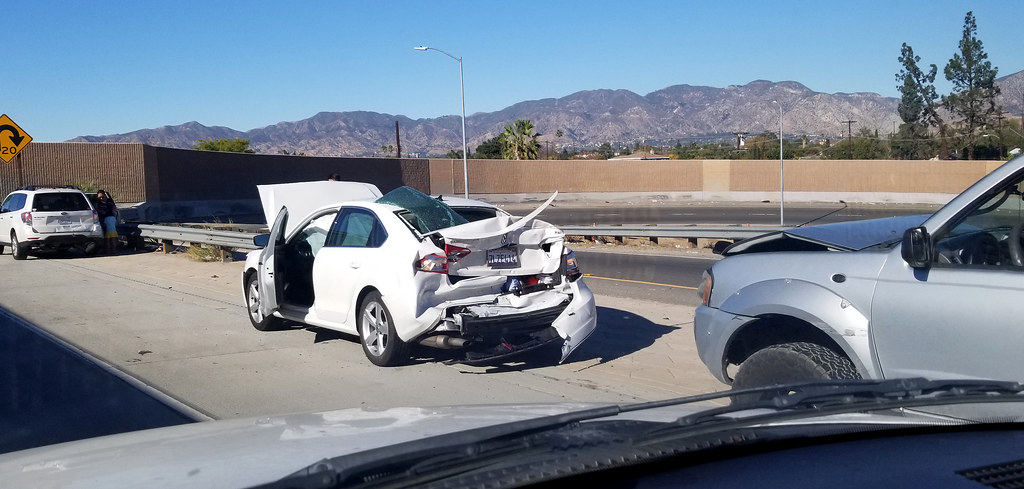
9. **Forward Collision Warning (FCW)**Serving as a precursor to AEB and a vital element of preventative safety, Forward Collision Warning (FCW) empowers drivers with timely information, affording them precious seconds to react to developing threats. This system is engineered to enhance driver awareness, acting as an intelligent lookout that extends the human field of perception. Its design focuses on proactive alerting, giving the driver the agency to avoid a collision through their own actions, guided by technological vigilance.
FCW systems leverage advanced sensors and cameras to continuously monitor the distance between the vehicle and any traffic ahead. By calculating the closing speed and potential collision risks, the system can determine if the vehicle is approaching another object too rapidly. This intricate monitoring allows for dynamic assessment of the road environment, providing a constant stream of data to its central processing unit to identify potential hazards before they escalate.
Should a potential collision scenario be detected, FCW immediately issues a warning to the driver. These alerts can manifest as visual signals on the dashboard, audible chimes or beeps, or even haptic feedback through the steering wheel or seat. The core objective is to provide a compelling, unambiguous cue that prompts the driver to take corrective action, such as braking or steering, well before an impact becomes unavoidable. This warning system buys the driver valuable time, which is often the critical differentiator between a near-miss and a severe accident.
Read more about: Unpacking Excellence: The Definitive Guide to 2025’s Most Coveted Luxury SUVs and Their Unrivaled Safety Innovations

10. **Blind Spot Detection (BSD)**Addressing one of the most persistent and perilous challenges in driving – the elusive blind spot – Blind Spot Detection (BSD) offers an invaluable layer of awareness, fundamentally transforming the safety of lane changes. The areas around a vehicle that are invisible in rearview and side mirrors have long been a significant source of frustration and, more critically, serious accidents. BSD was ingeniously crafted to eliminate this inherent limitation, acting as a digital sentinel that sees what the driver cannot.
At its operational core, BSD utilizes a sophisticated network of sensors, typically radar-based, strategically mounted around the vehicle’s rear and sides. These sensors constantly scan adjacent lanes, specifically monitoring for other vehicles that enter the blind spot zones. The system processes this real-time data to accurately identify when another vehicle is present in these difficult-to-see areas, even when it might be rapidly approaching.
When a vehicle is detected within the driver’s blind spot, BSD provides a clear and immediate warning. This often takes the form of a visual indicator, such as an illuminated icon in the side mirror or on the A-pillar, serving as a subtle yet effective prompt. If the driver then activates the turn signal to initiate a lane change while a vehicle is detected in the blind spot, the system typically escalates the warning with an audible alert, further emphasizing the danger. This multi-modal warning strategy is crucial in helping drivers avoid dangerous lane-changing maneuvers and the side-swipe collisions that frequently result from them, significantly enhancing highway safety.
Read more about: Beyond Instinct: 15 Cutting-Edge Vehicles for 2025 Designed to Shield You from Common Driving Pitfalls and Enhance Your Safety
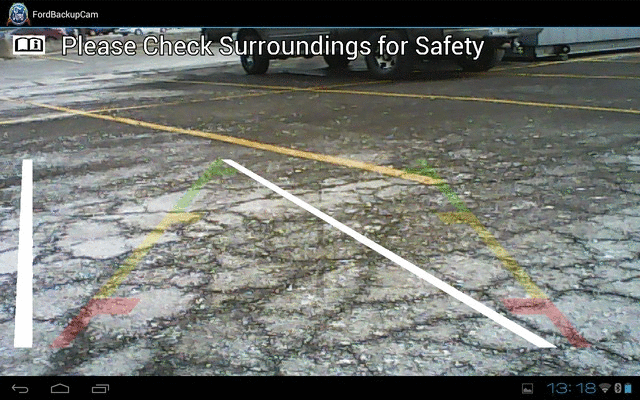
11. **Rearview Cameras**Revolutionizing the act of reversing, rearview cameras have transformed what was once a maneuver fraught with limited visibility into a task performed with enhanced confidence and safety. For decades, drivers relied solely on mirrors and neck craning, leaving significant blind zones that could conceal objects, small children, or even pets. The advent of the rearview camera represents a straightforward yet profound solution, fundamentally expanding the driver’s observational capabilities in low-speed, reverse scenarios.
The functionality is elegantly simple: a small camera is mounted on the rear of the vehicle, providing a wide-angle, real-time video feed of the area directly behind. This feed is displayed on a screen inside the cabin, typically integrated into the infotainment system. Unlike mirrors, which can distort distances or have restricted fields of view, the camera offers a comprehensive, unobstructed perspective, often complemented by dynamic guidelines that project the vehicle’s path based on steering wheel input.
The practical benefits of a rearview camera are immediately apparent and far-reaching. It dramatically simplifies tasks such as backing out of a driveway, parking in tight spaces, or navigating crowded lots. More importantly, it serves as a critical collision prevention tool, helping drivers identify and avoid obstacles or pedestrians that might otherwise be unseen. This direct visual aid significantly reduces the risk of low-speed backing accidents, making everyday maneuvers safer and less stressful, especially for vulnerable road users like children and pets.
Read more about: The Electric Pickup Truck Showdown: A Comprehensive Review of Ford F-150 Lightning and Tesla Cybertruck
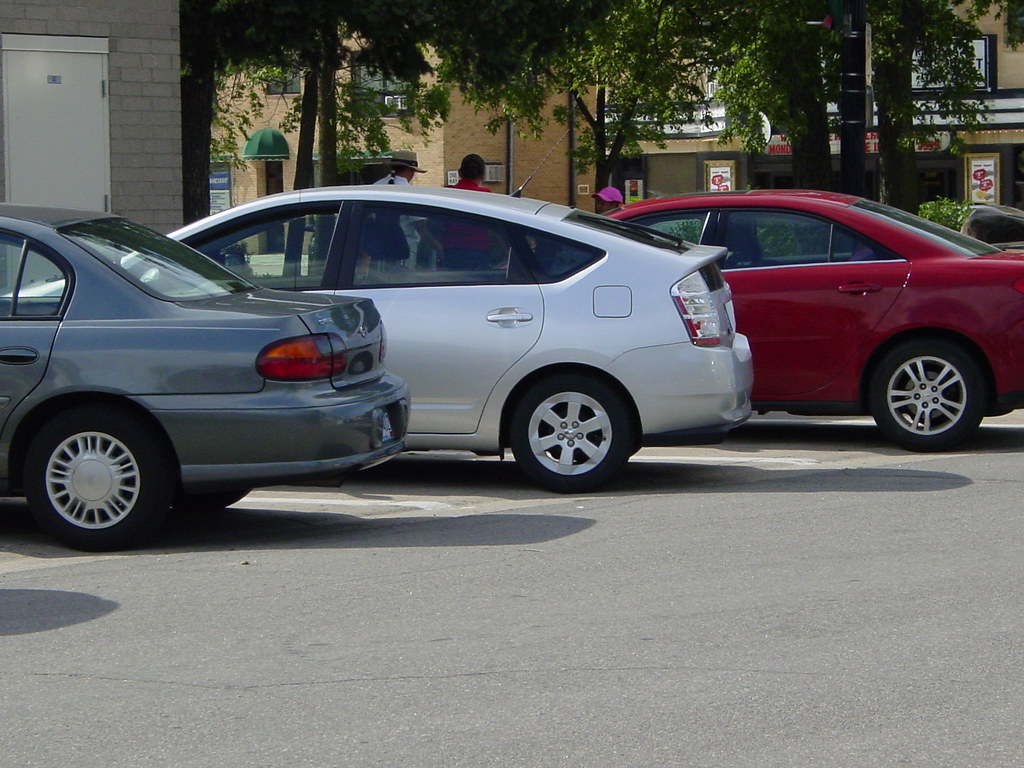
12. **Parking Sensors**Complementing the visual assistance of rearview cameras, parking sensors provide an additional, auditory layer of awareness for navigating confined spaces, acting as an invisible perimeter guard for your vehicle. They address the spatial challenges of parking in densely populated areas or maneuvering in complex environments where every inch counts. This technology showcases an intelligent application of sound waves or electromagnetic fields to provide precise proximity information to the driver.
Parking sensors typically utilize ultrasonic or electromagnetic technology, strategically embedded in the vehicle’s front and rear bumpers. These sensors emit waves that bounce off nearby objects, and the system measures the time it takes for these waves to return. Based on this data, the system calculates the distance to obstacles. As the vehicle draws closer to an object, the frequency of an audible beep increases, culminating in a continuous tone when the distance becomes critically small. Some systems also provide visual indicators on a dashboard display, showing the relative distance and direction of the obstacle.
The utility of parking sensors extends beyond just preventing minor scrapes and dents in parking lots. They are incredibly helpful in parallel parking scenarios, maneuvering in tight garages, or when reversing near low-lying objects that might be out of a camera’s view. By providing immediate and intuitive feedback on surrounding obstacles, these sensors significantly reduce the stress associated with complex parking situations. They are a prime example of how discreet technological aids can greatly enhance a driver’s spatial awareness and confidence in challenging urban environments.
Read more about: The Gears of Genius: 11 Studio Projects That Truly Redefined Automotive Expectations

13. **Connected Car Safety Features**Stepping into a new frontier of proactive protection, connected car safety features usher in an era where vehicles are not isolated machines but integral nodes in a vast, intelligent network. This paradigm represents a fundamental shift in how safety is conceived, moving beyond individual vehicle systems to leverage real-time communication and shared data. It embodies the future-oriented vision of automotive engineering, where collective intelligence enhances individual security on an unprecedented scale.
The core of connected car safety lies in the integration of advanced sensors with sophisticated communication systems. These systems enable vehicles to communicate not only with each other (Vehicle-to-Vehicle, or V2V communication) but also with road infrastructure (Vehicle-to-Infrastructure, or V2I). This continuous exchange of data allows for a proactive understanding of road conditions, traffic flow, and potential hazards far beyond the line of sight of a single driver.
Examples of how these features enhance safety are already becoming prevalent, often building upon existing ADAS foundations. For instance, connected systems can provide real-time warnings about upcoming congestion, accidents around a blind curve, or even slick road conditions detected by other vehicles miles ahead. Technologies like advanced lane departure warning systems, adaptive cruise control, and blind spot detection, when integrated into a connected ecosystem, become even more potent, leveraging shared environmental awareness to anticipate and prevent accidents more effectively. This collaborative approach significantly improves overall safety, offering predictive insights that are simply impossible for individual, unconnected vehicles.
Read more about: Smartwatch Longevity Secrets: Decoding Battery Life to Avoid Future Money Pits with Top Devices
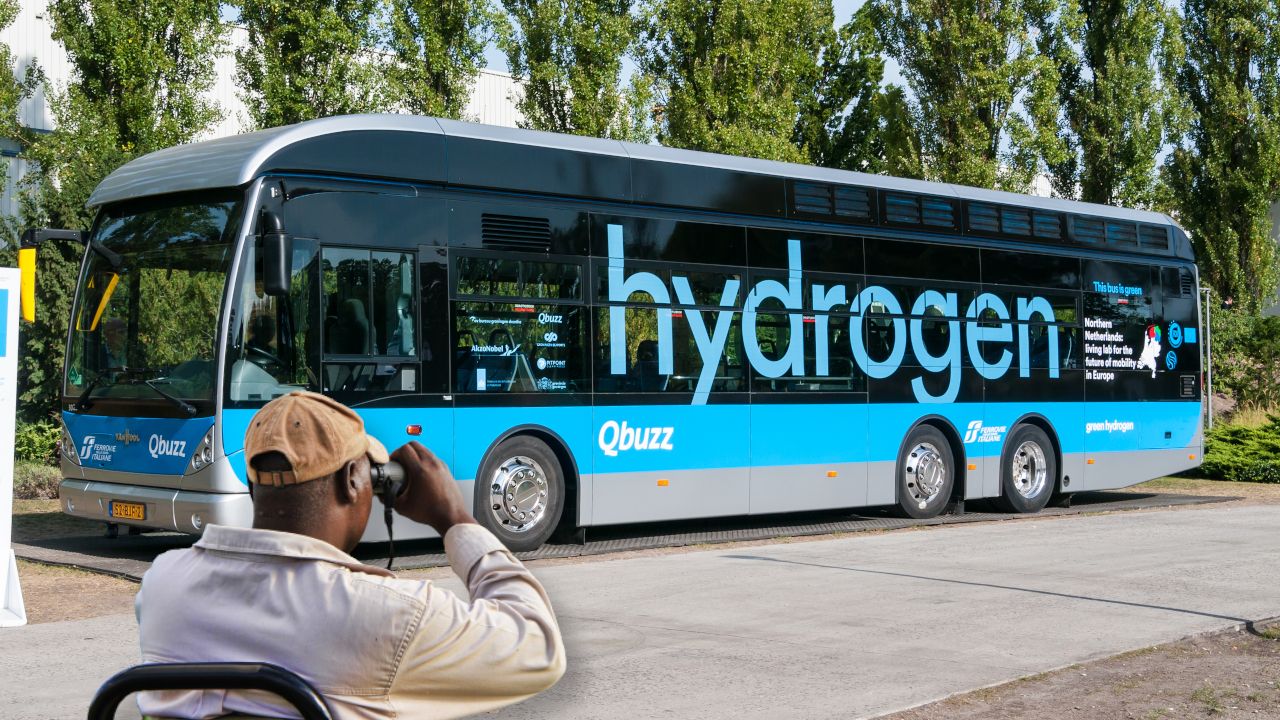
14. **Autonomous Vehicles**The ultimate manifestation of advanced safety technology, autonomous vehicles represent the pinnacle of automotive engineering’s quest for an accident-free future. While still in various stages of development and rigorous testing, the underlying promise of self-driving cars is nothing short of revolutionary: to eliminate human error, which is the root cause of the vast majority of road incidents. This audacious vision posits a future where artificial intelligence, not human fallibility, governs our journeys, making split-second, optimal decisions that prioritize safety above all else.
The technological craft behind autonomous vehicles is a complex tapestry woven from a multitude of sensors, high-resolution cameras, sophisticated radar, and cutting-edge lidar systems. These components work in unison to create a 360-degree, real-time understanding of the vehicle’s surroundings, detecting everything from road markings and traffic signs to other vehicles, pedestrians, and cyclists. This deluge of data is then processed by powerful artificial intelligence algorithms that interpret the environment, predict actions, and command the vehicle to navigate roads, maintain appropriate speeds, and adhere to traffic laws with unparalleled precision.
A key driver of the autonomous vehicle revolution is the profound potential to drastically reduce accidents caused by human shortcomings. Distracted driving, impaired judgment, fatigue, and aggressive behavior — all common factors in collisions — would be systematically eliminated. By relying on algorithms that do not tire, get distracted, or make emotional decisions, autonomous vehicles are engineered to maintain a consistent, vigilant level of awareness that is beyond human capability, leading to a significant reduction in road casualties and injuries.
Furthermore, the true power of autonomous vehicles is amplified by their ability to communicate. These self-driving cars can seamlessly communicate with each other, sharing information about road conditions, hazards, and traffic patterns in real-time. They can also interact with smart infrastructure, receiving updates on traffic light changes or construction zones. This interconnectedness allows for optimized traffic flow, minimized congestion, and a collective, predictive safety net that further enhances collision prevention. The vision extends to a future where vehicles coordinate their movements, creating a harmonious and inherently safer transportation ecosystem.
As we look towards the horizon, autonomous vehicles are not just about convenience; they are about a fundamental redefinition of safety. Their meticulous craft and the tireless vigilance of artificial intelligence hold the promise of transforming our roads into spaces of unprecedented security. While the journey to widespread deployment is ongoing, the trajectory is clear: a future where the human element of risk is systematically minimized, and the dream of truly safe travel moves closer to reality.
Read more about: The Electric Pickup Truck Showdown: A Comprehensive Review of Ford F-150 Lightning and Tesla Cybertruck
From the foundational strength of the seat belt to the intricate dance of autonomous decision-making, the evolution of vehicle safety is a testament to relentless human ingenuity and technological ambition. Each landmark feature, whether a passive protector or an active intelligent assistant, represents a critical stride forward in the craft of safeguarding lives. We have traversed a landscape of innovation, uncovering how these systems, individually and synergistically, work to create an ever-more impenetrable shield around us. The road ahead promises even greater advancements, pushing the boundaries of what vehicles can achieve in securing our peace of mind and, ultimately, our very existence on the open road. The study of these forever hits reveals not just technologies, but a profound commitment to a safer tomorrow, etched into the very design of our transportation future.



